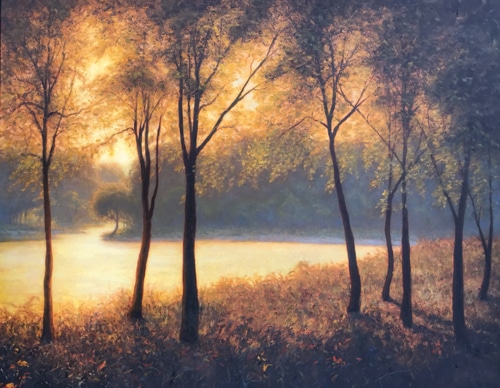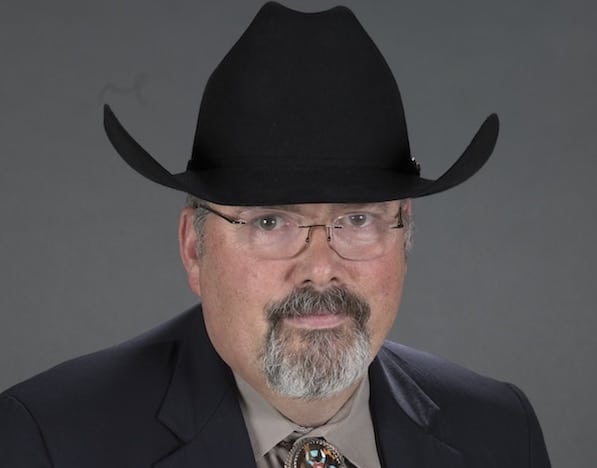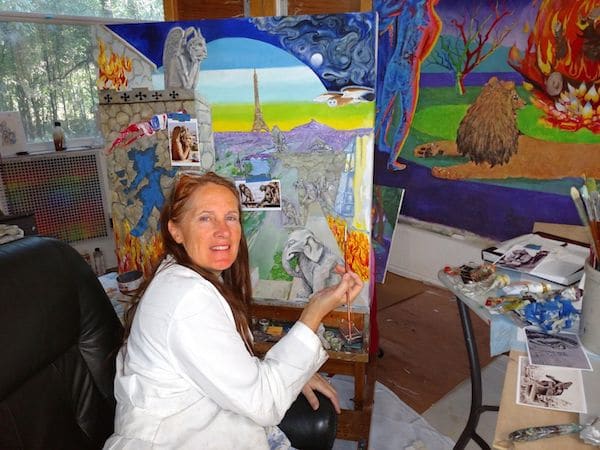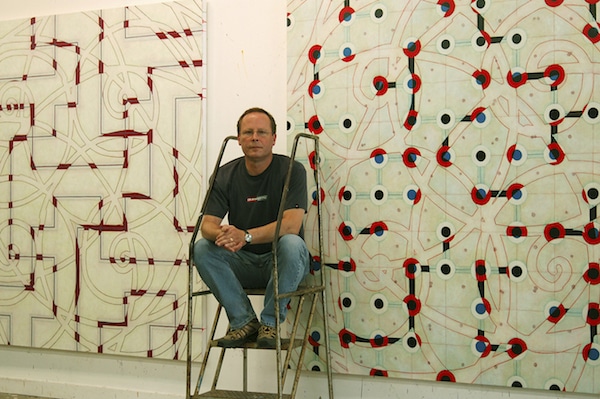 2017 Accelerator Fellow
2017 Accelerator Fellow
Where did you grow up?
Seattle, Washington.
When/how did you first know that you wanted to be an artist?
I was in middle school was when I first started to develop as an artist. I attended an arts-focused K-12 public school, where I had the same great art teacher in both middle and high school. She organized a project with a famous guest artist who taught us about mural painting. We designed and painted a huge mural that was hung just off the freeway, on the side of a local store. This project showed me that art was not just something to create in my sketchbook—that it could make a statement to the local community and that people could relate to it. That mural stayed up for ten years!
Where do you currently live/work, and how would you describe the arts community there?
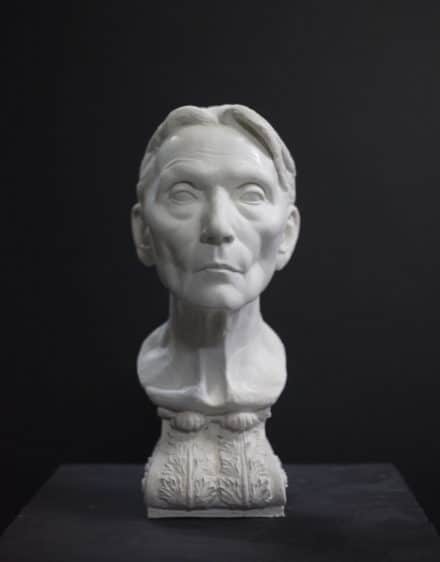
I live and work in New York City. There is a great arts community here, specifically a contemporary realist art community. I work in a studio called the Grand Central Atelier (GCA), which is a small school for “classical art.” I teach at the GCA and also have a private studio there. The city has other studios and art schools like mine, and the museums are AMAZING, so there is a lot going on here.
How would you describe your art to someone who’s never seen it?
I work with soft, water-based clay. I use my hands to place the clay, piece by piece, as I build up the form. Typically, I work with a model and create sculptures from life, although sometimes I design figure sculptures from my imagination, and I’ve also created portraits on commission. I tend to work in half life-size scale, although recently I’ve started sculpting full life-size figures.
What do you hope to communicate to your audience?
It’s all about form. Fundamentally, my work should arrest the viewer in space. With each piece, I am communicating a specific but subtle emotion. I really responded to a quote from Johann Winckelmann, who is considered a founder of modern art history. He described Greek art as displaying “noble simplicity and calm grandeur.” When he looked at the Greek sculpture group Laocoön and His Sons—which depicts a man and his sons being entangled by two snakes that were sent to kill them—Wincklemann saw the deep repose of the man’s soul. He wrote that when the ocean is choppy on the surface, the depths remain calm. Through my sculptures, I aim to present a deep sense of humanity’s integrity and basic goodness.
What’s been your biggest business challenge?
Figuring out how to write proposals and contracts, and learning the legal language.
Tell us about a business success and what you did to achieve it.
My computer desktop used to be a mess. Every time I wanted to apply for a grant or a competition, I had to sort through the images of my work over and over again. Now I catalogue these images as I create them, which makes the application process much easier. Having a folder with an updated c.v. and images that I can easily share has made a big difference.
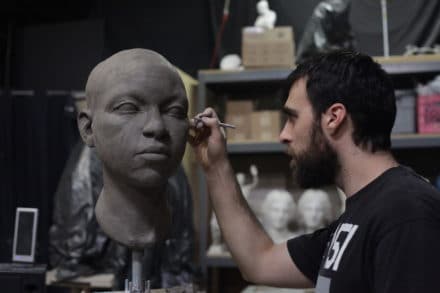
How do you feel about today’s technology (tools for your business, for creating your art, or both), and has it altered your way of doing business?
I am excited by today’s technology and working to incorporate it into my practice. The traditional process for my work involves sculpting a figure or portrait, making a mold of it, and casting it in bronze or carving it in stone.
Today, however, it’s possible to use a computer to manufacture the sculpture. I enjoy working in clay, but I’ve also learned how to scan my sculptures and generate 3D computer models. I haven’t yet printed a sculpture, but I plan to try. This approach is still quite expensive when compared with traditional methods, but we’re in a big moment of transition, so I am learning how to use 3D modeling programs. While working from life and in clay helps me develop my understanding of design principles, I am excited by the new technological developments, especially when it comes to production.
What do you think about the state of today’s art market?
The top end of today’s art market seems pretty crazy to me—very inflated—a place for the ultra-rich to manipulate their money. I am encouraged, however, by the market that’s opened up on social media. It allows artists to skip the gallery and go straight to the buyers who are interested in their work. The process is more direct and allows artists to express their true selves.
Give us an example of how you balance studio time with business time.
In the past, I’ve created too many sculptures that lack intention. I’d create just for the sake of sculpting—because I loved doing it. Now, by engaging in business processes, I plan my sculptures and try to balance the time that I spend in the studio. I think of my business time as another thoughtful stage in my creative process.
How have you evolved as an artist?

As a draughtsman and sculptor, I started by developing my observational skills, but increasingly I’m incorporating a mental conception of form into my work. I’m no longer just looking at an object and trying to copy the way it looks. My goal is to understand what is happening with the form in three dimensions and manipulate it as I see fit—to gain control of it.
I am developing an understanding of how to communicate using form. When elements of the human figure are treated in isolation, they can produce a very abstract experience. For example, when a bicep is tensed, it will shorten and become more square-shaped, but in its larger context, in relation to the muscles around it, a tensed bicep can be threatening or strong or even graceful.
How have you evolved as an entrepreneur?
I am more willing to take risks, and am also much better at saying no. I know what I enjoy doing, and I won’t stretch my business thin anymore.
What role do artists play in our society? What role SHOULD they play?
These days, artists are typically outsiders. I’d like to see society engage with artists more. We are cultural commentators, but it’s hard to say that we are actually cultural influencers; too often we are forced to respond. I want to see artists integrated into all kinds of decision making, especially the design of new buildings and infrastructure. As a society, we are building everywhere, but the choices we’re making seem to be based primarily on economics, with little regard for artistry.
For more information on Charlie Mostow, see his official CHF bio.




